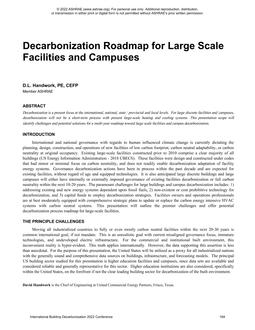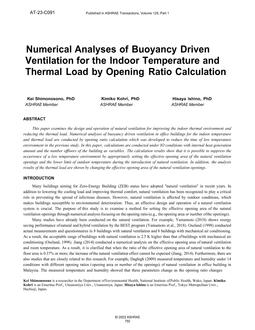
C067 — Passive Strategies to Improve Thermal Conditions in a Care Home in London, UK
Click here to purchase
This work assesses the current and future risk of summer thermal discomfort of older adults in a refurbished care home in London, UK. It further explores the potential of passive adaptations to improve indoor environmental conditions. Temperature and relative humidity data from continuous monitoring during summer 2019 were used to calibrate a building performance simulation model of the care home. Simulation outputs from two bedrooms and two lounges under the current (2019) and future climate (2080s with 90th percentile probability, high-emissions scenario under the UK Climate Projections 2009) were analyzed to evaluate the risk of indoor overheating and humidity discomfort, and to test the effectiveness of adaptation scenarios related to window operation and external shading. Results showed a high risk of exposure to high indoor temperature and low humidity under the current climate, which are expected to worsen in the future. Regarding the effect of passive adaptations, it was found that the highest potential decline in overheating and dry air incidence could be achieved through a combination of secured window opening at night and closing of external shutters during the day; yet this was compromised by an increased risk of humid air. Results further indicated that these strategies are not adequate under a future high-emissions climate scenario, which suggests that care homes need to combine passive and active ventilation to maintain indoor environmental comfort and reduce anticipated cooling demand.
Product Details
- Published:
- 2022
- Number of Pages:
- 10
- Units of Measure:
- Dual
- Product Code(s):
- DBldgsXV-C067

